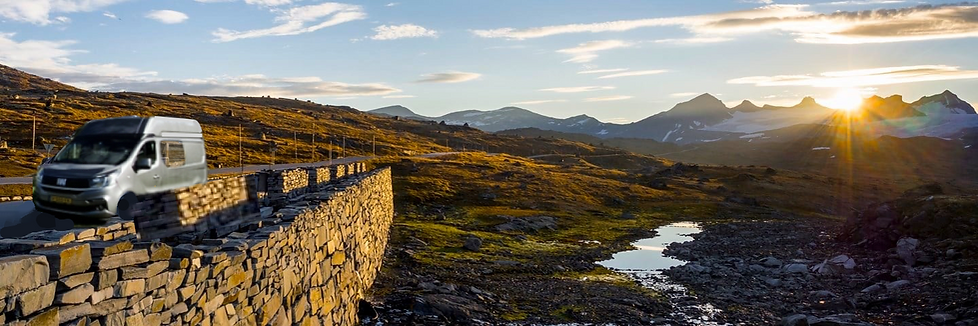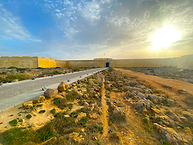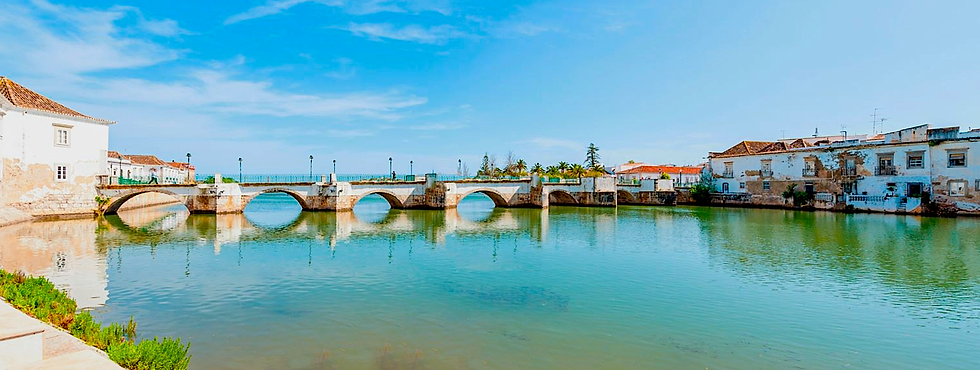


Algarve Portugal - Seville Spain






Road trip Sagres Portugal - Seville Spain
Discover that the Algarve is more than sun and beach
This road trip starts in the westernmost tip of Europe Fortaleze Sagres in the Portuguese Algarve. We visit a number of Fortified Towns along the Portuguese south coast.
And end this trip in the Spanish Seville.
Sagres
Near Sagres lies Cape Saint Vincent, the end of the world. At least, that's what people thought a long time ago that that was the end. It has been a sacred place since the time when people actually started living there, they have been able to confirm this by finding many menhirs. This was seen as the end of the world, because the residential area ended abruptly in a cliff 50 meters high and no land could be seen in the distant surroundings. All they saw was water, water, and more water. The name Cape Saint Vincent, (Cabo de São Vicente is Portuguese) owes it to a deacon who was brought ashore here and is buried here. His name Vincent of Zaragoza, or otherwise, Saint Vincent.
The 24 meter high and 150 year old lighthouse is the only building in the area. With a visibility range of 90 km, this is one of the most important beacons along the Atlantic coast. The lighthouse is built on the ruins of an old monastery. Some remnants are still visible.



Lagos




Lagos is one of the oldest authentic towns in the Algarve with a rich history in the Portuguese district of Faro. The renovated old town is surrounded by city walls from the Moorish period, which played an important role from the 8th century. King Alfonso II of Portugal managed to transfer the city definitively into Portuguese hands in 1241. It soon grew into an important base for voyages of discovery to the African continent. Everywhere there are old buildings and monuments from that prosperous trading period. In the 15th century, the first slaves brought from Africa were sold on the Mercado de Escravos. The square overlooking the sea will always be a reminder of its cruel history.
The coastline here has the beautiful jagged limestone rocks, in between are divided intimate beaches. Most of the inhabitants of the municipality live along the coastline and work in tourism .
Silves



Silves, is the oldest city and former capital of the Algarve. Silves is best known for its beautiful red castle built on a hill. The medieval town was the center of the Arab occupation in this area about a thousand years ago, symbolizing Castelo dos Mouros. Furthermore, the archaeological excavations are interesting and within the walls there is a park with beautiful flowers.
In the park of the old center, with its pettoresque streets, there are various elements that refer to the Moorish period. Silves is bursting with storks' nests. On top of the high towers, on the roofs of old buildings or around the fortress, the birds look for a safe place to carefully build their nests
benagil




Benagil and the surrounding area has a breathtaking limestone rock coast, one of the 10 most beautiful places in the world. The reviews about the fairytale cave at Praia de Benagil are super positive.
The enchantingly beautiful cave at the small beach Praia de Benagil deserves a place of honor. Nature has created an impressive natural shelter here with a wide view of the ocean. The rounded curves and the view to the blue sky give it a mystical, almost otherworldly atmosphere. It is advisable in season to visit the cave in the late afternoon or early morning, with a canoe or surfboard available for hire.
Consult the ebb and flow cycle at https://www.citipedia.info/nl/tides/portugal/lisbon_portugal, preferably visit the cave at low tide. An alternative is a drilling trip which is possible from various places, choose to sail with a small boat.
It is special to find fossils of shells in the limestone on top of the rocks at about 35 m above sea level, which means that the sea level must have been about 35 m higher in the past.
Loulé


Loulé is a real marketplace just above Faro. The village is best known for its large covered market hall and the popular weekly market on Saturdays. In addition to the market, there is a beautiful shopping street in the village with all kinds of nice local shops.
Loulé is one of the oldest places in the Algrave and was founded by the Moors. Their influence can still be seen in the small narrow streets of the city. You will find the characteristic white houses everywhere and you can still find old Moorish baths in the city. The city walls also date from the time of the Moorish rule. In the 12th century the Moors disappeared and a Christian ruler came. The old Mosque was replaced by a church, but the old minaret still serves as a church tower.
Faro



One of the reasons to explore Faro is the traces you will find of its enormously rich history. Faro was a significant settlement in prehistoric times as well as in the times of the Roman Empire. It was the Romans who built the port of the city. In 1755 Faro was hit by a devastating earthquake. A year later, Faro was officially granted city rights and in the years that followed, the city was restored. The old walled city center (Cidade Velha) is the part with the greatest appeal. It starts with an impressive entrance at the high city walls that date from the Middle Ages. The most beautiful part of Faro is the area in and around the old city walls
Ponto Expresso - Café a protected city monument from 1500 that survived the earthquake in 1755, among other things, on the Rua Alexandre Herculano, situated next to the Brazilian Consulate against the old city.
Would like to draw attention to this because of the cordial service and the excellent menu.




Tavira







Tavira is a small charming town, cozy lively, cozy in all seasons on the coast of the Algarve in Portugal. It extends over the Gilão River, which reaches the sea through the coves and lagoons of the Ria Formosa Natural Park. The island off Tavira has a long sandy beach and salt pans that attract flamingos, spoonbills and other wading birds, sea turtles and dolphins are spotted where the sea touches the vast lagoon. In the center, the medieval castle of Tavira offers a view of the city. The Ponte Romana bridge spans the Gilâo River and connects the east and west banks of the city. Tavira is located in the Eastern Algarve, about thirty kilometers from the airport Faro and just as far from the Spanish border.
A number of restaurants are located on the west bank where you can relax along the river bank. We had lunch at almas lovely, charming location and service
Seville






Seville is a bustling city in my experience with “thousands” of restaurants. Most striking is the crescent-shaped building on the Plaza de España. These buildings formed the Spanish Pavilion in 1929 during the World's Fair, symbolizing the hold Spain had over its former American colonies. In the current context, as we now judge the European colonial past, this would be debatable to say the least.
The Basilica de la Macarena, Because the Macarena district is outside the tourist areas, it is one of the most authentic areas of Seville.
Metropol Parasol is a wooden building in the old part of the Spanish city Seville . It covers the square Plaza de la Encarnacion and measures roughly 150 by 70 meters. At the time, it was claimed to be the largest wooden structure in the world. The structure was built under the direction of the German architect Jurgen Mayer and was intended at the time to breathe new life into the square and its surroundings. Construction at the time was plagued by delays and cost overruns.
Completely hidden from view, but very special are the basins of the Mudéjar Palace of Real Alcázar De Sevilla / Reina & Asociados, where scenes from the Game of Trones were shot. The basins further below much of Seville provided the water supply


Dinner lunch tip, yes, but no tapas. At Hard Rock Cafe located on the southern edge of Jardenes de Murillo located C. San Fernando, surprising by a very special interior The friendly camarero Alex gave us an excellent Norwegian Salmon menu by taste composition interior and service I thought it was necessary to mention this
Special feature for this area as a common thread throughout the road trip are the characteristic ceramic tiles





